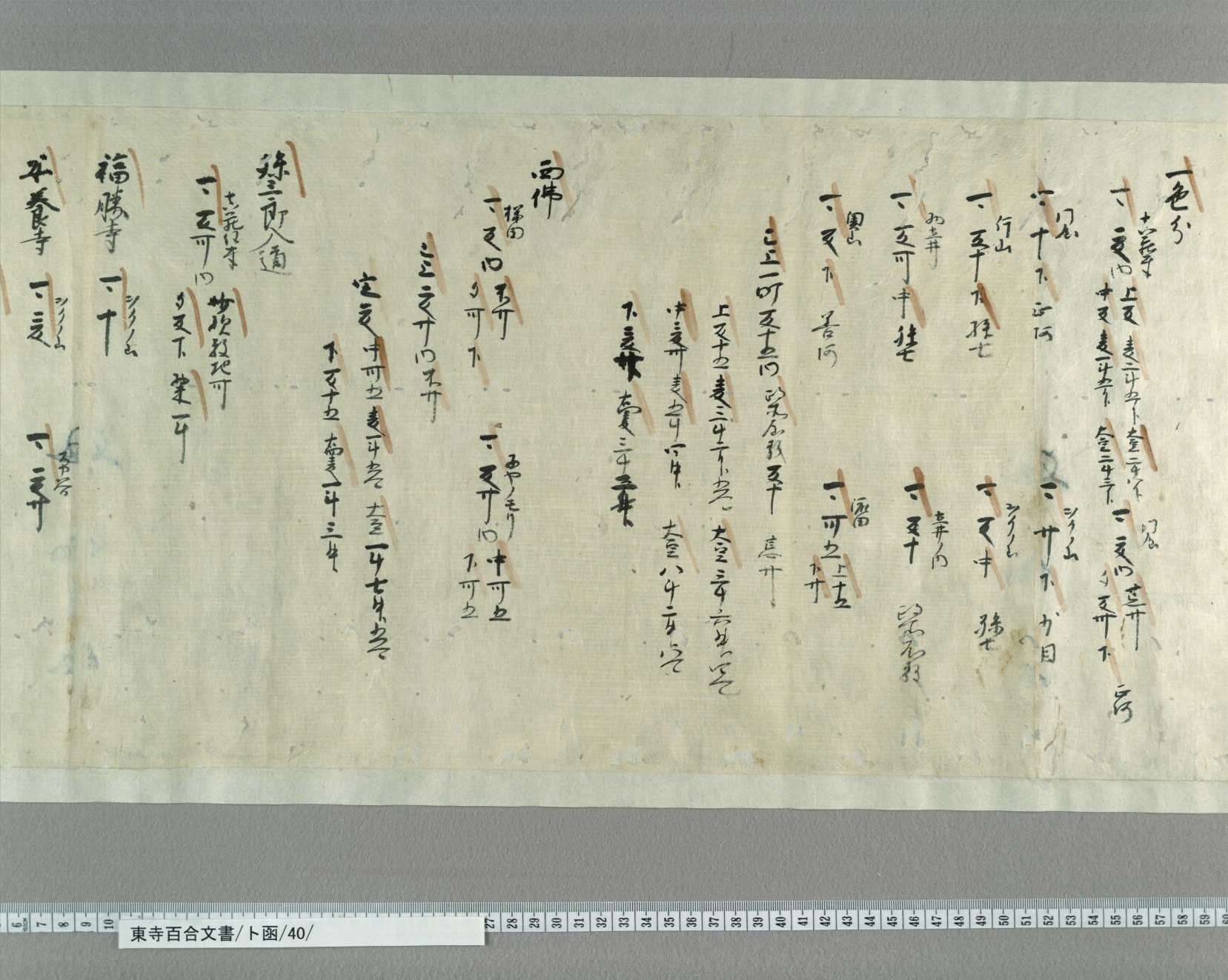
Present view of the Nakahasami Mandokoro site(中ハサミ政所)
Aioi City, Hyogo Prefecture, where Yanonosho is located, is remote from the Toji temple in Kyoto, though both are included in the Kansai region. For landowners to rule Shoen from Kyoto, they needed to establish local bases for administrative and operational affairs. Such facilities were called “Mandokoro”. For Toji, local Mandokoro were the heart of domination over Shoen. Where, then, were Toji’s Mandokoro located?
To the southwest of the junction of the present Yanogawa river and Ogo river, there is a place named “Maejo (政所)”, using the same characters as “Mandokoro (政所)”. The Fujiwara clan, which had dominated Reimyo, a part of Yanonosho, prior to Toji, had established “Nakahasami Mandokoro” in this place.
What does “Nakahasami” mean? There is a theory that the Ogogawa ran in a route that differed from that in the present day, and that this Mandokoro was built sandwiched (“Nakahasami”) by the Yanogawa and the Ogogawa.
When Reimyo was divided into the eastern part and the western part, the Nakahasami Mandokoro was taken by the Jito (local master of manor) as a part of the eastern part. Subsequently, the Fujiwara clan, which took the western part of Reimyo, had to establish a new Mandokoro. The document below indicates the range of the eastern part. The characters “中ハサミ (Nakahasami)” appear in many places of the document:

Where did the Fujiwara clan establish their new Mandokoro? Unfortunately, its location has yet to be revealed. It is not yet known, either, whether Toji took over the Mandokoro that was established by the Fujiwara clan when Toji replaced them as the ruler of Reimyo Nishikata, or a new Mandokoro was built by Toji. Approximately 50 years after the division of Reimyo into the eastern part and the western part, Toji had a Mandokoro in a place called “土井ノ内 (Doinouchi)”. In the document below, the characters “土井ノ内” and “政所屋敷 (Mandokoro Yashiki) (yashiki: mansion)” are seen at the bottom of the fifth line from the right.

There are different theories concerning the location of Doinouchi. One theory locates it around the “大避神社 (Osake Jinja)” shrine, which was worshipped by people as the guardian of the entire Yanonosho. Another theory considers that Doinouchi was located near the “須賀神社 (Suga Jinja)” shrine. There was a residence of the Hon’iden clan, which managed farm fields as “Tadokoro”, in the proximity of Suga Jinja, and the Hon’iden residence was used as a Mandokoro mansion for some time. Both theories seem equally convincing. There is a possibility that the Mandokoro was relocated several times, and the two places are both the sites of the Mandokoro.
* For the specific locations of the Nakahasami Mandokoro site, Osake Jinja, and Suga Jinja, see Google Maps.
(Kaji, Historical Materials Section, the Kyoto Institute Library and Archives)